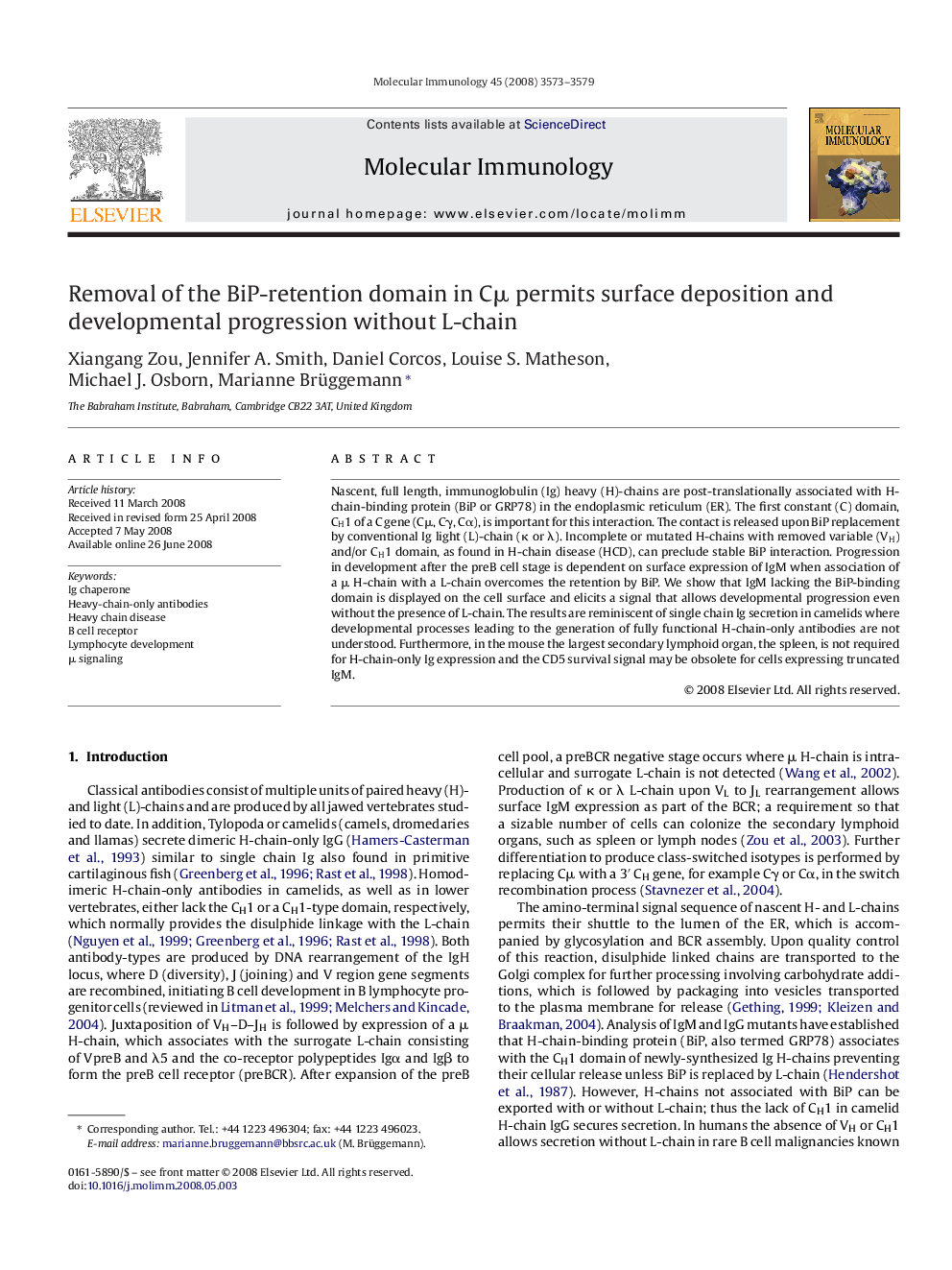| Article ID | Journal | Published Year | Pages | File Type |
|---|---|---|---|---|
| 2831705 | Molecular Immunology | 2008 | 7 Pages |
Nascent, full length, immunoglobulin (Ig) heavy (H)-chains are post-translationally associated with H-chain-binding protein (BiP or GRP78) in the endoplasmic reticulum (ER). The first constant (C) domain, CH1 of a C gene (Cμ, Cγ, Cα), is important for this interaction. The contact is released upon BiP replacement by conventional Ig light (L)-chain (κ or λ). Incomplete or mutated H-chains with removed variable (VH) and/or CH1 domain, as found in H-chain disease (HCD), can preclude stable BiP interaction. Progression in development after the preB cell stage is dependent on surface expression of IgM when association of a μ H-chain with a L-chain overcomes the retention by BiP. We show that IgM lacking the BiP-binding domain is displayed on the cell surface and elicits a signal that allows developmental progression even without the presence of L-chain. The results are reminiscent of single chain Ig secretion in camelids where developmental processes leading to the generation of fully functional H-chain-only antibodies are not understood. Furthermore, in the mouse the largest secondary lymphoid organ, the spleen, is not required for H-chain-only Ig expression and the CD5 survival signal may be obsolete for cells expressing truncated IgM.
